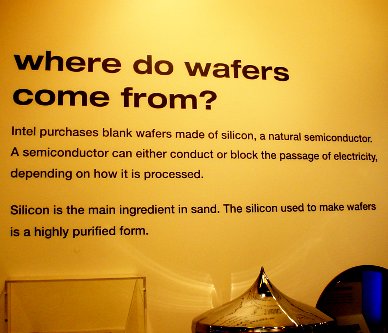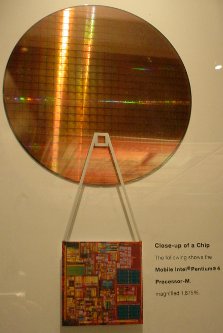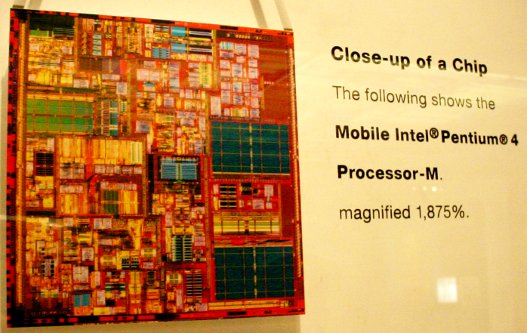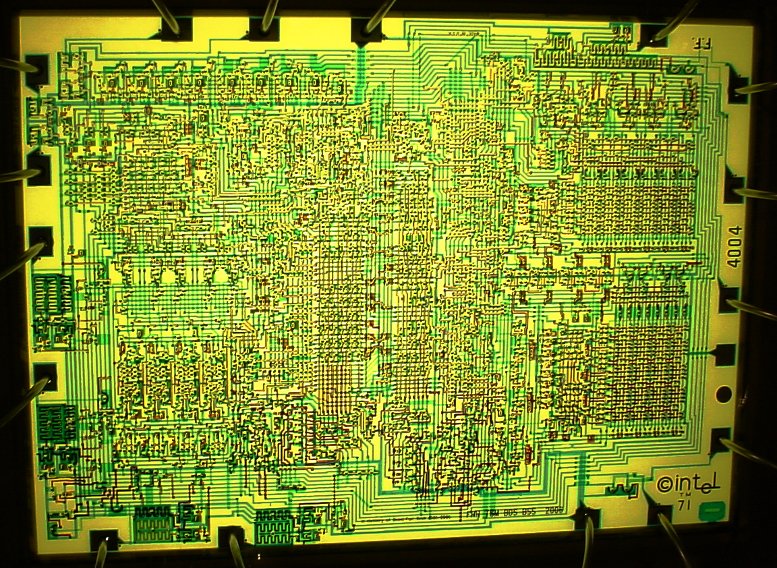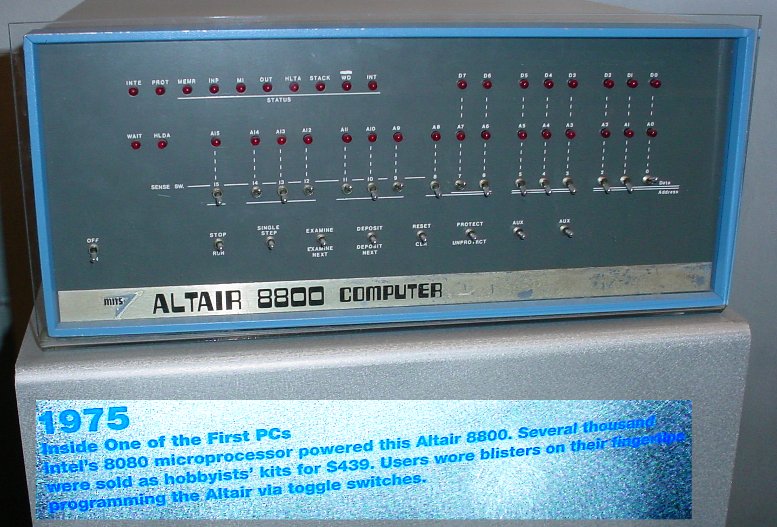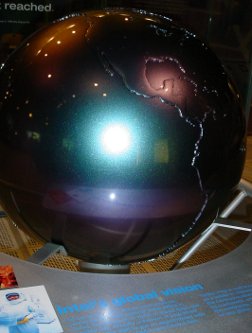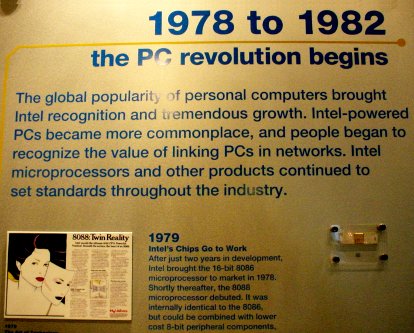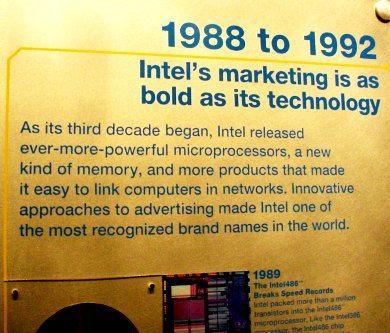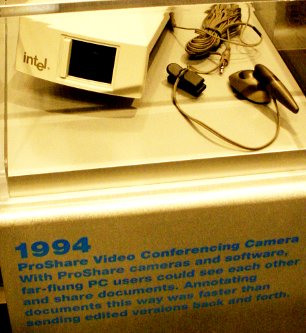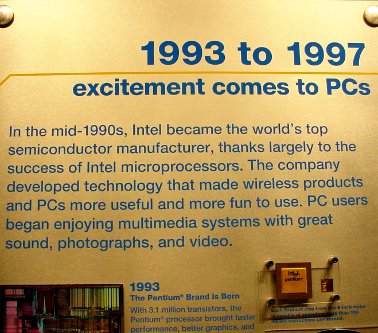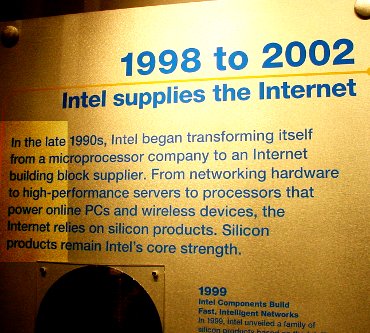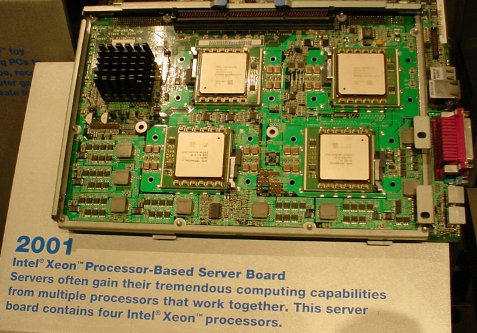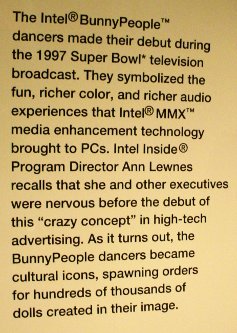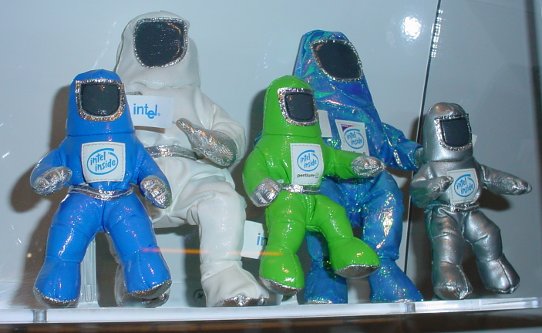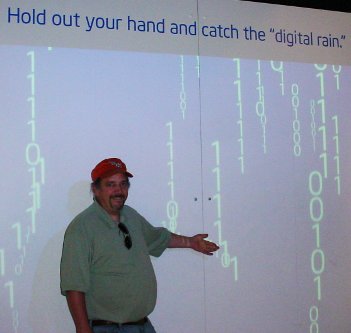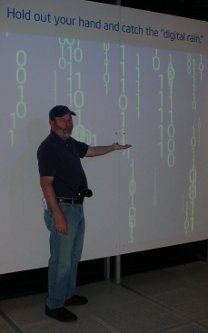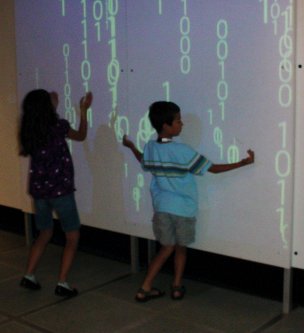Back when I worked at
AOL I had some great coworkers. One of them has since gone back to
Kansas to work there. He was touring California on vacation, spending a
few hours with each of his many friends and relatives in the state. We
decided to take in the Intel Museum in Santa Clara, that being
something we could probably both enjoy.
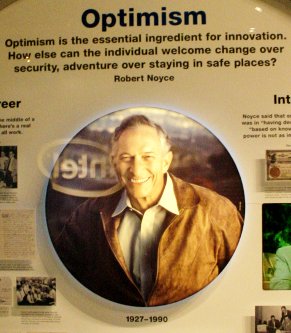
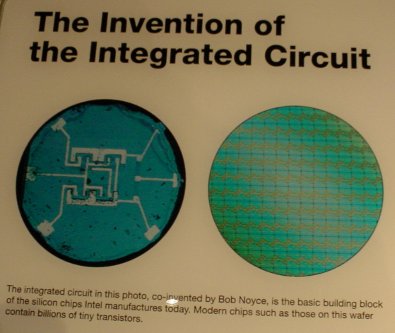
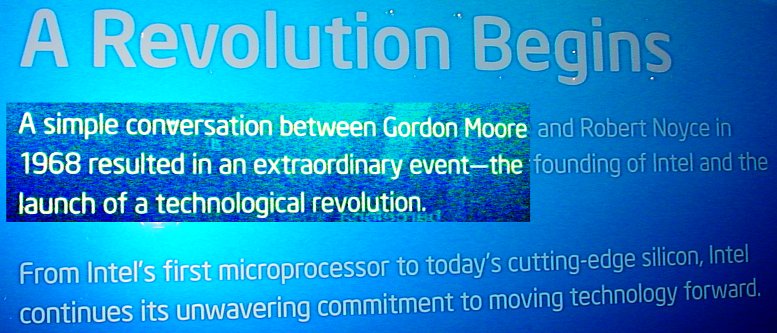
Am I surprised that
they forgot to mention the work going on at Texas Instruments at the
same time? Anyhow, that was followed by some stuff that explained
something about what a semiconductor is.
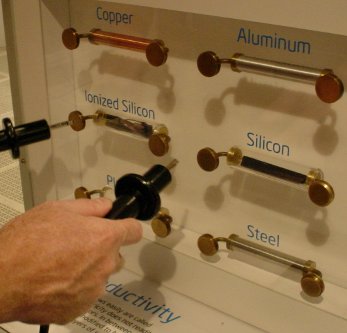
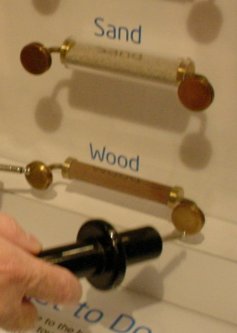
To put it simply,
it's something that sort of conducts electricity. The added feature
that makes semiconductors powerful tools is that you can control how
good their conducting properties are with electrical signals.
I interviewed many times for jobs at
wafer processing tool companies, but never ended up working in the
industry.
To find out about those six steps see
the museum yourself!
The 4004 was the first CPU chip good
enough to power a low level personal computer. At that point in time it
was just something hobbyists and industrial control people were
interested in.
Robert remembered working on something
like this at that time. The closest to something like that I remember
was setting the boot switches on a PDP-11-35 at Bradley when turning on
the computer there. I programmed assembly language in many different
environments, but not by typing it in on a control panel! Downloading
via paper tape or by programming EPROMs was how I did it.
I first became familiar with PCs in
1983ish, when working at Sente. We still used a minicomputer to do the
heavy lifting of compiling and assembling code, but more and more PCs
were taking over. It started when they started using PCs as terminals,
which gave the desktop machines a lot more capability to explore.
Robert spent these years doing disk I/O
controllers and such. For me, those were test equipment and user
interface software years.
In 1991 the Gulf War sent a spasm of questions like "what can we do to
make the economy more energy efficient?" through Silicon Valley. One of
the ideas that surfaces then was teleconferencing. Intel participated
in that by making "video conferencing cameras". Nowadays it seems like
every mobile phone with a camera comes with this capability, but back
then it was a fascinating new idea.
There was quite a bit of material about
their big marketing campaigns, as well as much more than the stuff
above about the technical history.
It's hard for me to miss the elemental
sound of Intel's more recent product names. Xeon even looks a lot like
Xenon. I consider Helium and Neon much more valuable Nobel gasses, for
whatever that's worth. Before the pentium came out Intel's CPUs were
8086, 80186, 80286, 80386, 80486. I was expecting the pentium to be an
80586. I heard the marketing people considered following the numerical
sequence that too
predictable. My question is, is there such a thing as too predictable?
For what it's worth, I still think it's predictable that Helium is
chemically inert in most situations you or I are likely to see. Xenon
is slightly less inert, but still not usually dangerous. The
predictablity of a Xeon, on the other hand, depends a lot on the
quality of the hardware and software system it is part of. This can be
less than ideal.
Need I mention that their tourist trap
had Intel(R)BunnyPeople(TM) for sale in an assortment of sizes and
colors?
I bet that lots of visitors to this
museum pose catching the digital rain. You have to be young to really
enjoy playing with it though.
1659




